Laminated vs Drop-Liner Motorcycle Garments
Published on: 07 February 2020
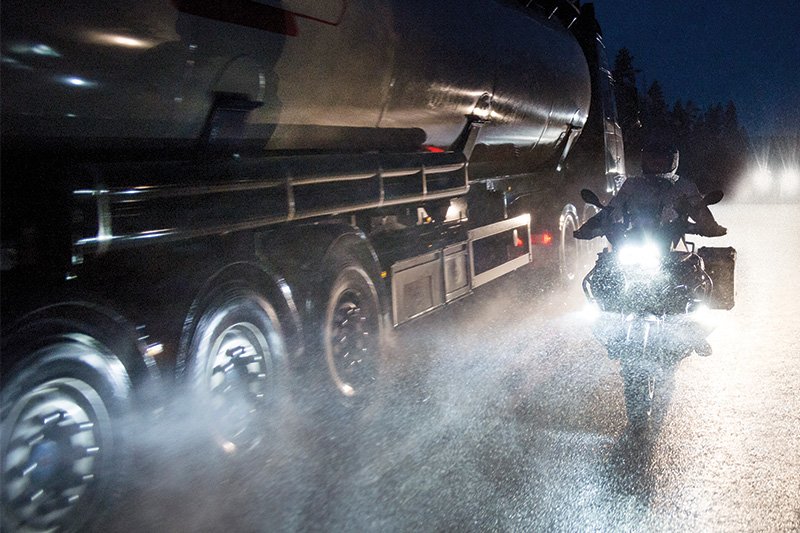
There’s a lot of talk these days about laminated, motorcycle clothing. There seems to be a perception out there that laminated products are universally superior, and that drop-liner garments are not really up to the job.
Now it’s probably true that we have been at the forefront of the charge towards lamination, but there’s still a lot of confusion out there, and actually we still take the view that, for many motorcyclists, a good drop-liner combination is often still the better option.
So, in this article, we’re going to go into a bit more detail about the two different ways in which manufacturers can create waterproof garments. We’ll explain the technical differences. We’re going to try and dispel some myths, and we are going to attempt to come to some recommendations about the kind of riders who need laminated gear and those who would be better served spending their hard-earned cash on a drop-liner outfit.
Now, laminated, motorcycle-wear has been around for a long while. We dabbled with motorcycle gear some ten years ago, when we were Grand Prix Legends, before we became a dedicated motorcycle company. We remember being told by the distributor why Rukka laminated gear was so expensive. I recall an explanation as to why it was not as comfortable to wear, but nobody ever attempted to explain the real benefits of lamination and how it worked.
In fact, Hein Gericke was doing laminate gear even before Rukka did. Heck, my Aerostich suit, which I bought over 30 years ago, was laminated, which makes it even more surprising that it always leaked like a sieve!
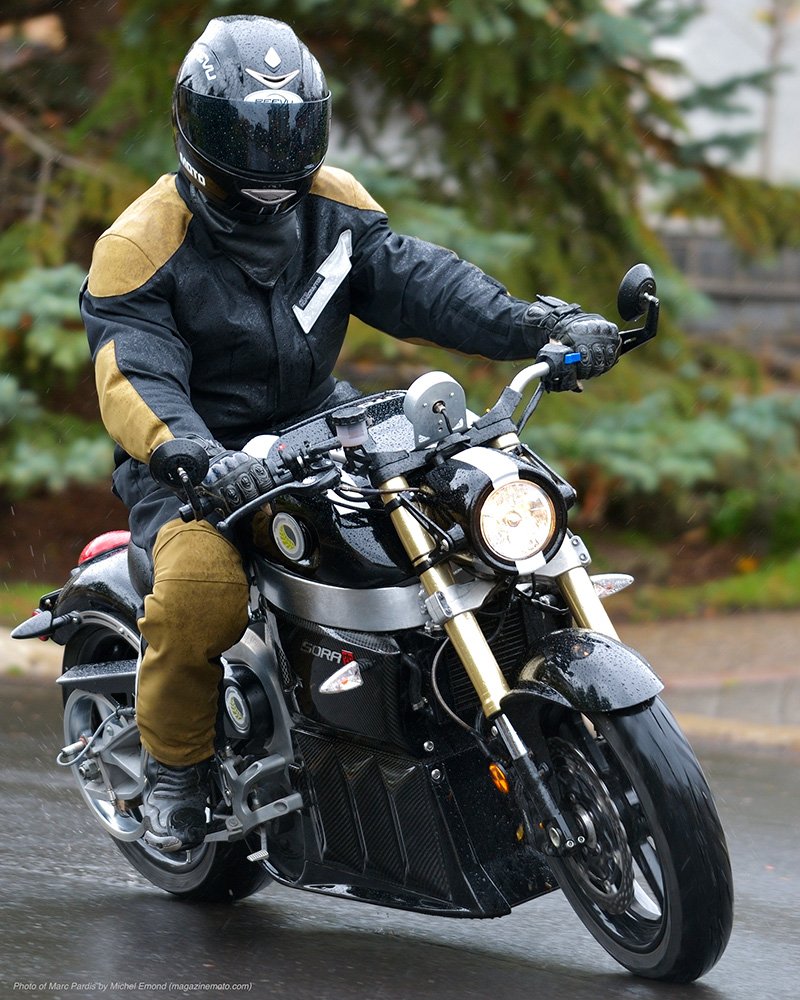
But, for the last 40 years or more, the go-to way to create a waterproof, motorcycle garment has been to equip it with a drop-liner, waterproof membrane; sometimes known as a z-liner membrane.
Now all waterproof garments, even those with a zip-out, waterproof membrane, start out with a similar ptfe (Polytetrafluoroethylene) membrane. This is an ultra-thin sheet that contains millions of holes. These holes are so small that rain drops cannot pass through the membrane. But through these tiny, tiny perforations hot, moist air generated by the body as sweat can escape. This is the magic of a membrane. It keeps you dry from the outside because the rain cannot pass through it, but it also keeps you dry from the inside because it allows the hot and moist sweat from the body to escape through the membrane into the atmosphere.
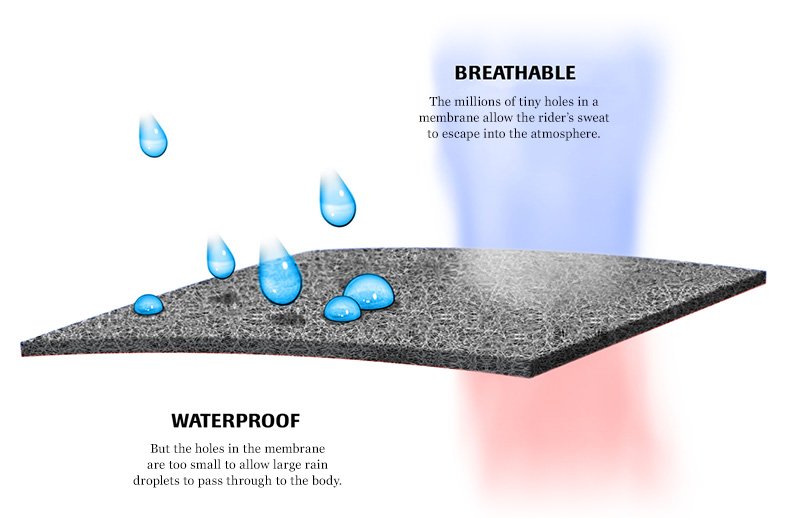
In the very early days of waterproof, motorcycle garments, manufacturers used to simply place a plastic sheet inside a garment. This was effective in keeping the wet rain out, but it meant that you got wet from the inside, because your sweat could not escape. Indeed, even today, some cheap waterproofs are made from sheets of polythene-like plastic. They are known in the business as ‘boil-in-the-bag’ suits, and for obvious reasons.
Before we get into the whole lamination thing, let’s explain a bit more about membranes. Basically, they all work in the same way. No membranes are totally impermeable, so people who talk about 100% waterproof garments are talking nonsense.
The permeability of a membrane is measured by its ability to withstand a certain pressure of water. (The measure of pressure is calculated by reference to the amount of water in a vertical tube). The higher the pressure that can be withstood, the more waterproof a membrane is, but every membrane has its limits, and even Gore acknowledges that if a 12 stone man were to kneel in a puddle in a pant with a Gore-Tex liner, their membrane would be breached.
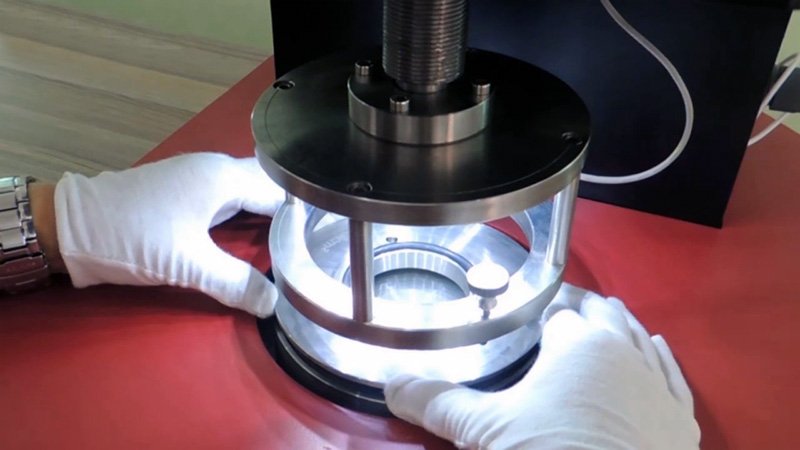
Now clearly if you want to create a membrane that is more waterproof, you put less holes in it, but when you do this you potentially make it less breathable, meaning that whilst you might diminish the chances of getting wet from the outside you increase the propensity of getting wet from the inside. And so there is ,therefore, no such thing as the ‘best’ membrane. A membrane is a trade off. Some are more resistant to the rain; others are more breathable. There is, for example, a fantastic Japanese membrane that was designed for high speed motorcycle riding in the way that Gore-Tex never was. It is, indeed, very waterproof, but it won’t breathe as well as some membranes when you’re working hard on the bike in thirty degree temperatures.
Having established the basics of what a membrane is, and how it works, this might be a good time to talk more specifically about Gore-Tex. Now some people think that Gore-Tex is the generic name for all waterproof garments. Clearly, it is not. It is just a brand name for a particular membrane. It’s a good membrane that has been continuously developed over the years by the leading player in this arena. But we have already suggested that there is no such thing as the ‘best’ memembrane; and we hold by this. But nevertheless, there is probably good reason, in most circumstances, to have greater faith in a Gore-Tex membrane, and to pay a premium for it.
And that’s because you cannot simply buy Gore-Tex by the metre and sew it willy-nilly into a jacket or pant. Gore has a highly-respected brand, whose reputation the company is determined to protect, and so if, as a manufacturer, you want their label on your gear you have to do things their way. They will look at the design for your garment. They will issue instructions on how it should be constructed, and then, when the garment is complete, they will inspect it and test it.
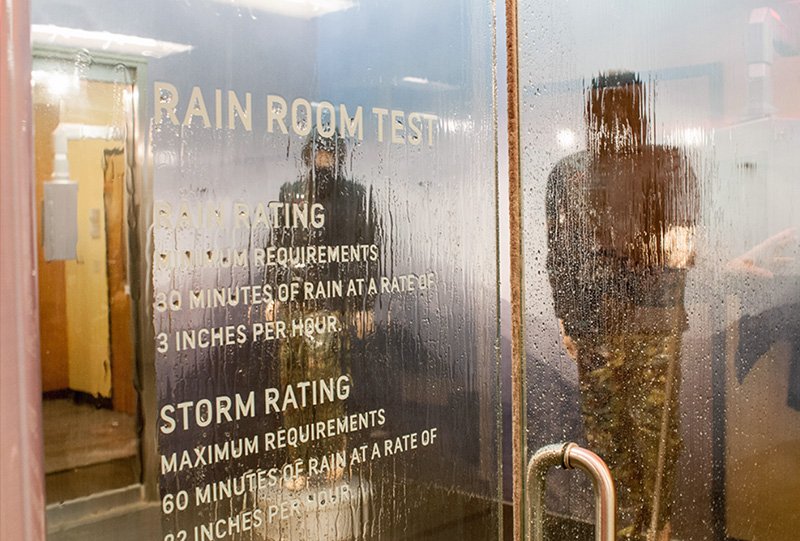
So whilst their membrane is undoubtedly a fantastic one, you pay more for a Gore-Tex garment not for this reason alone, but because you can have confidence that a Gore-Tex equipped garment has been put together in a manner that will minimise the possibility of any water ingress.
Now, a couple of small, waterproofing-related issues before we get into the main agenda. First, every waterproof garment comes with what is called a DWR (Durable Water Proof) treatment. This is simply the initial barrier that stops water from being absorbed by the outer fabric. It is a coating that is applied to the garment’s surface. When you pour a cup of water on to a material that has been coated in this way, you will see the water pool and run off. A coating on any garment wears off, and has to be re-applied, normally after washing. A jacket or pant that relies solely on a coating, frankly, is not going to be very waterproof.
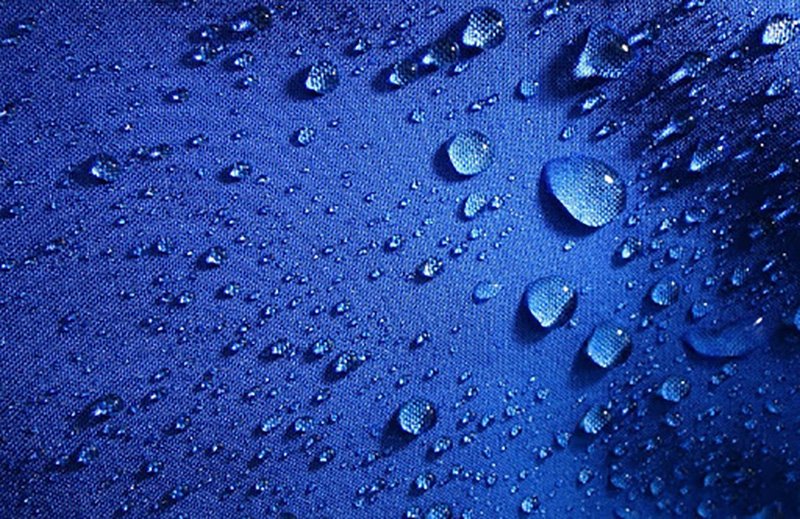
Earlier in this article, I mentioned zip-out waterproof membranes. This system probably deserves an article of its own but, very simply put, jackets and pants constructed in this way are designed for riding off road or in particularly hot conditions. Remove the membrane, and the garment becomes particularly well vented and breathable. The downside of removable membranes is that, because water can pass through the zip, garments equipped with a removable, liner cannot be totally relied upon in really heavy rain.
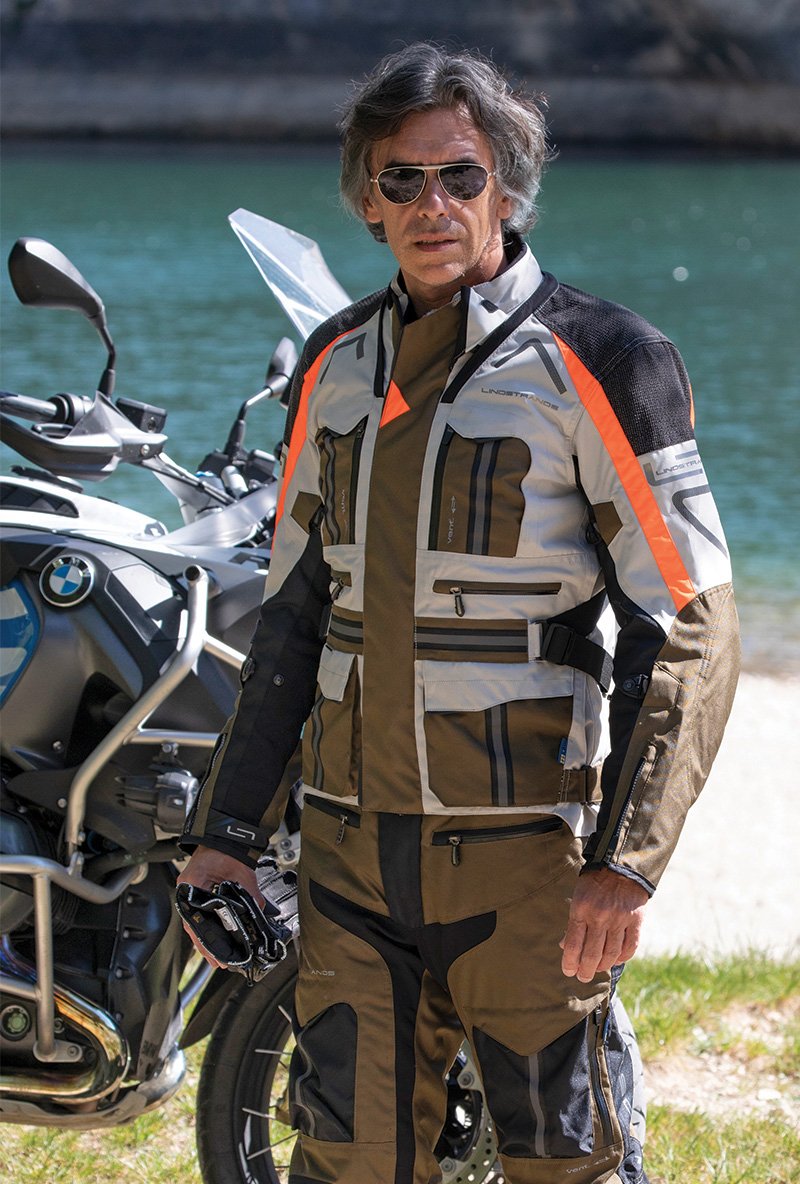
Okay, so now at last we can get down to the main business of this article: laminated vs. drop-lined constructions.
Drop-lined garments have dominated the market for the last 40 or 50 years, and they still do. The technology is not particularly sophisticated. It makes for inexpensive manufacture. Basically, the membrane is suspended from the shoulders of a jacket or the waist of a pant. It hangs or ‘drops’ from where it is sewn into the garment; hence the description drop-liner. Where the membrane is sewn into the product, it is taped with waterproof tape to stop water entering the garment through those sew holes.
The system works admirably, and in a well-made jacket, using a good-quality membrane, you will stay dry for many hours, even in the heaviest rain. But it is in particularly prolonged bouts of rain that a drop-liner garment will eventually reach its ‘level of incompetence’. After four or more hours of heavy rain, when you might have been riding at speed, rain will have passed through the outer fabric. Now, in theory, when this happens, you still won’t get wet, because the membrane should stop any moisture from reaching the body. But the garment itself can become very wet; waterlogged, in effect. It can reach a stage that we call ‘wet out’. With all this water swilling around, you might imagine when you’re riding that you’re getting wet even when you’re not. But what is more concerning, perhaps, is that the wind chill effect upon a soaking wet garment can make you feel very cold indeed. It’s not nice, but there has to be a lot of rain, and you have to on the bike for a long time, and probably at speed, for it to happen.
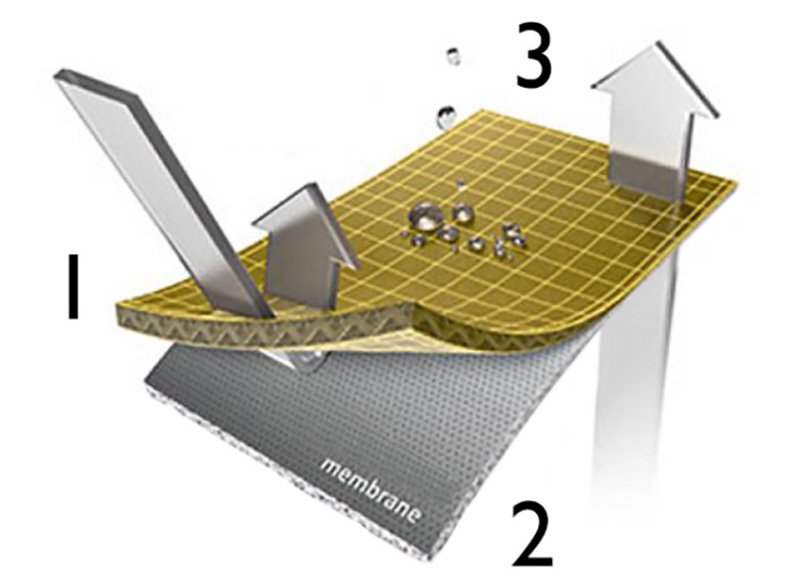
2. Because of the size of the holes in the membrane, water cannot pass through the membrane.
3. The size of the holes, however, are large enough for sweat to pass through from the body.
Another related downside of this effect, albeit a less extreme one, manifests itself upon those who commute long distance throughout the winter. Let’s say you commute an hour into work, and on your way in it rains heavily. Your jacket and pants won’t wet out, but they might get quite damp. The problem is that when the time comes to ride home in the evening, a drop-liner garment might not have dried out. That’s not a nice feeling when you’ve got a long ride home on a cold, and perhaps wet, winter’s evening. It’s why, as we’ll explain, high-mileage commuters tend to always go for laminated products.
But there are a number of upsides to drop-liner motorcycle wear. Historically, such garments have been cheaper, and although the gap has closed considerably in recent years, we would suggest that a £500 drop-liner jacket will feature refinements that you won’t, in general, get on a £500 laminated jacket.
For reasons we will go into, in greater detail, when we talk about laminated garments, it has to be acknowledged that drop-liner products are more comfortable to wear, more cosseting. Drop-liner pieces are also warmer when it’s cold. Let’s put a caveat in that. They are warmer when it’s cold and dry, but potentially colder when it’s cold and wet.
Now let’s talk about laminated garments.
Laminated garments use the same kind of membrane you get in a drop-liner piece, but instead of being suspended from the top of the garment, the membrane is bonded, or heat sealed, to the inner surface of the outer, protective fabric. Now, the first issue is that when you do this, you tend to create a fabric that is stiffer and therefore slightly less comfortable to wear. Obviously, the nature and weight of the outer layer will have a bearing on this, as will whether the lamination is two or three layer.
Both two and three layer laminates do the same job. Three layer garments are a little more robust and less susceptible to damage, but three-layer garments tend to be less comfortable than those with a two-layer membrane. The direction of travel, it has to be said, is towards two layer, and our view would be that the difference between the two is not great from a functional perspective. And Gore gives the same warranty on both two and theee layer products, so our inclination would be to nearly always go two layer, unless your in the 25,000 mile a year category.
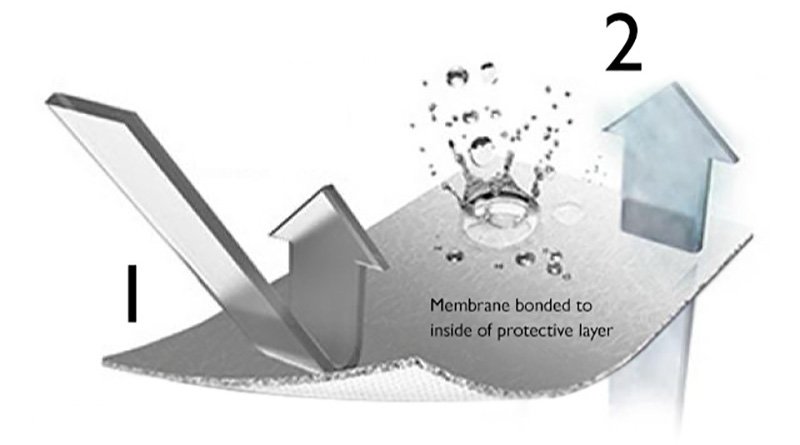
2. But, as with a drop-liner membrane, the sizes of the holes in the membrane are large enough to allow sweat to pass through from the body.
What all laminated products have in common, of course, is that water cannot pass through the outer fabric of the jacket. It cannot because the membrane is stuck to its inside. In heavy rain, a laminated jacket or pant will become damp, wet even, but they will never wet out. As a rider, you will stay drier for longer, and because the garment is holding so little water, it will dry out much faster once you’ve stopped riding; normally within an hour or two.
Venting on laminated clothing is also much more effective than it is on drop-liner clothing because, when you sew a zip into the fabric, incoming air passes straight through to the body, whereas in a drop-liner garment the incoming air has to pass through a waterproof membrane which is, of course, also a wind proof membrane. So laminated gear can work quite well in hot weather, but when it’s raining such garments do place a premium on high-quality, waterproof zips, because if the zip does let water in it will go straight through to the body. Frankly, it’s one of the reasons that cheap laminated gear tends not to work. These makers will use inferior zips because they have to hit a cost, and frankly if you don’t use the best YKK zips, you’re taking a risk.
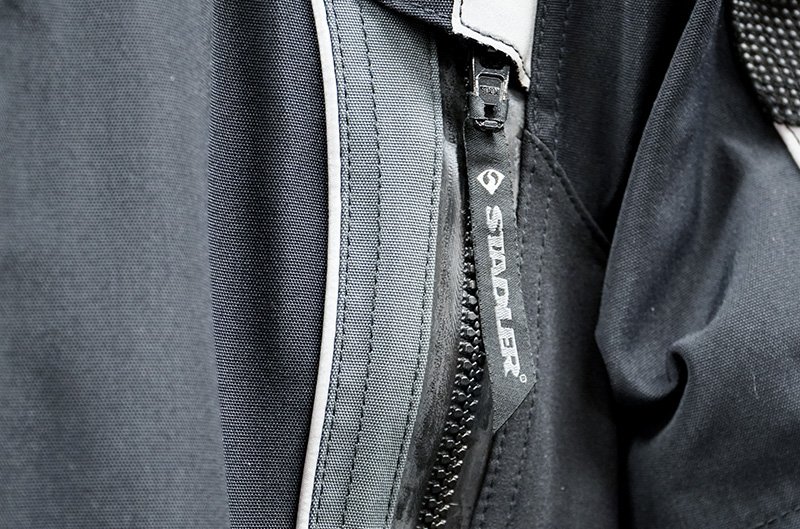
Now, when we were talking about drop-liner garments, we alluded to a somewhat confusing paradox, whereby laminates are warmer in some conditions, drop-liners in others. Now is the time to put more flesh on those bones. Basically, when you laminate the membrane to the outer fabric you lose an air gap. That air gap can be an important insulating layer that traps in the body’s heat, slowing down its escape from the garment. It’s why drop-liner jackets, in particular, tend to be warmer and more cosseting. But, in heavy rain, it’s a different picture. In heavy rain, a drop-liner garment will hold that water. The effects of wind chill at 60mph can make you feel much colder than you might be if you were wearing a laminated garment that holds much less water. Hence the apparent contradiction. In dry and cold conditions, a drop-liner jacket will be warmer. In wet and cold conditions, a laminated might be.
Now, in the past, the choice and range of options were less than they are today. 10 years ago, you went for laminated because you were rich, or because you liked to show off, or because you rode so many miles a year that it was the only sensible option.
But these days we’re seeing a great reduction in the price of laminates, and now everybody, even the real budget players, are getting involved in this arena. Rukka has always been at the top of the laminate tree. They still make one of the nicest suits on the market, but you will pay £2k for the privilege of owning it. Two years ago, Halvarssons rocked the market by producing not one, but two, laminated suits that came in at around a grand. But now we have a number of offerings at that figure, as well as a very impressive outfit from Richa that costs just £500. We have already acknowledged that there are suits out there that are even cheaper than this but, as we have suggested, be careful. We know what it takes to make a laminated suit work, and it simply cannot be done on the cheap.
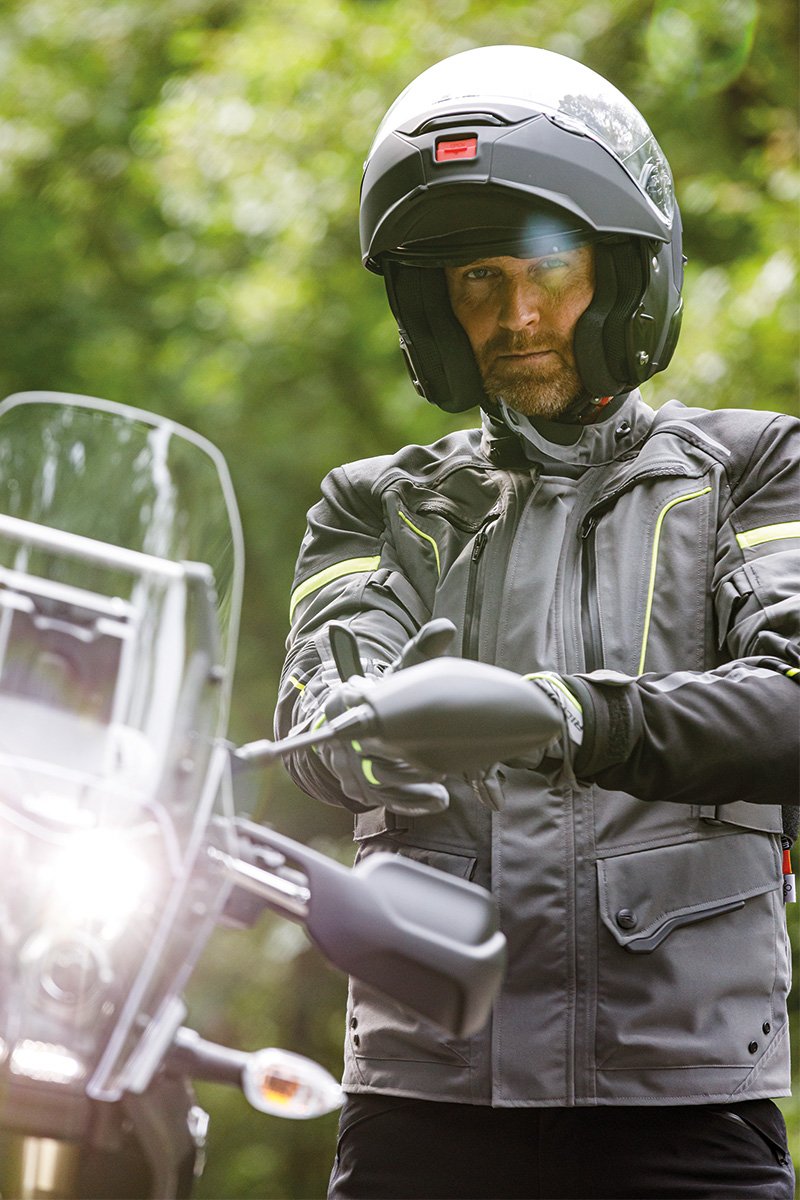
But the bottom line is that it’s now a more confusing picture for bikers. Before, we would have said that it wasn’t worth paying the extra for a laminated suit if you rode less than 10,000 miles a year. But if you can go laminated for £500, £600, £800 or even a thousand pounds, then laminated clothing certainly becomes more of a possibility for the weekend, leisure rider.
So, where do we get to? Well, what gets in the way a little is that bikers who spend too much time on forums tend to convince themselves that they need a laminated suit where, in reality, they often don’t. We see this in the shop a lot; the guy who does 2,000 miles a year, who rides a Harley, who never leaves the house when it’s raining, but who has convinced himself that he’s fed up of his jacket wetting out. The fact is that this guy does not need a laminated suit. A drop-liner outfit would serve him much better.
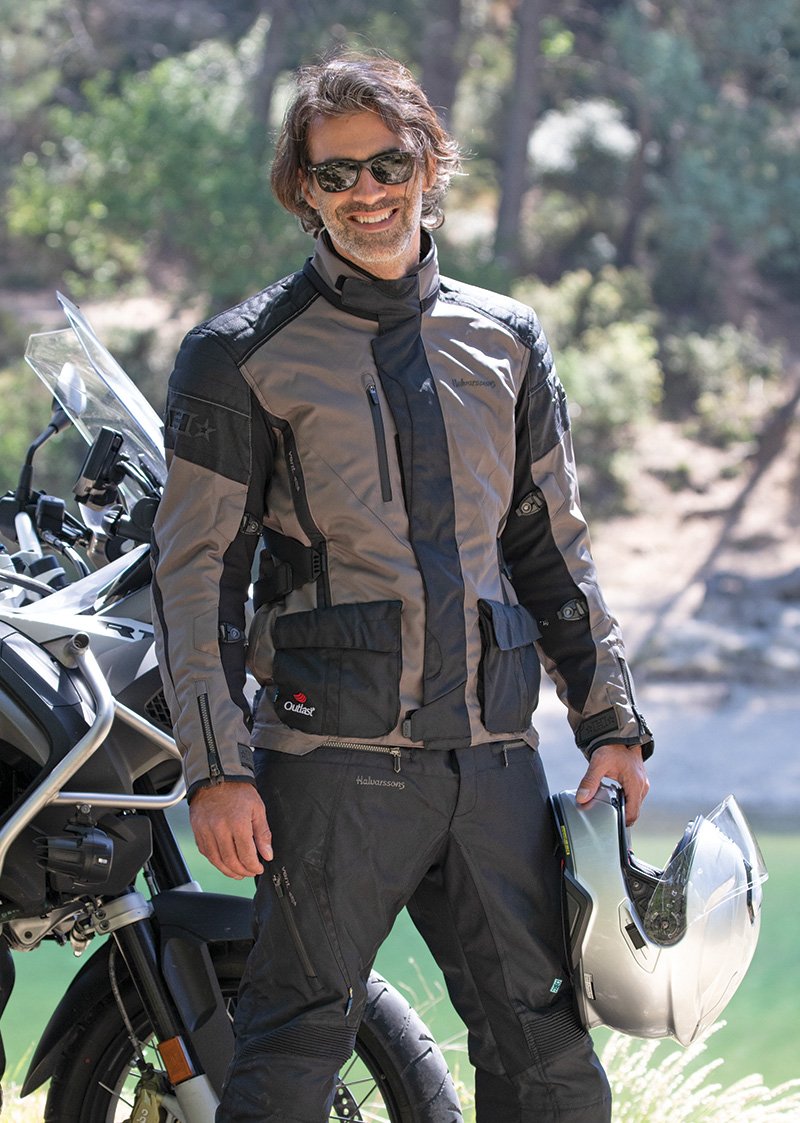
Our view has not, in truth, changed greatly despite the tumbling prices for laminated gear. If you ride less than 5,000 miles a year, you’ll get more bang for your buck if you go for a drop-liner outfit. As you move toward becoming someone who does 10,000 miles a year, there’s a chance that you will find yourself in heavy rain more frequently, but still for people in this category we would usually recommend a Halvarssons’s Wien drop-liner jacket, combined with either their W pant or Wish pant. Frankly, if you’re doing 15,000 miles a more, making the case for going laminated is much easier. If you do 20,000 miles plus a year, we would have no reservations. Not only would we recommend going laminate, we’d try and persuade you to bite the bullet and go for the very best from someone like Rukka or Stadler. You’re going to need it!
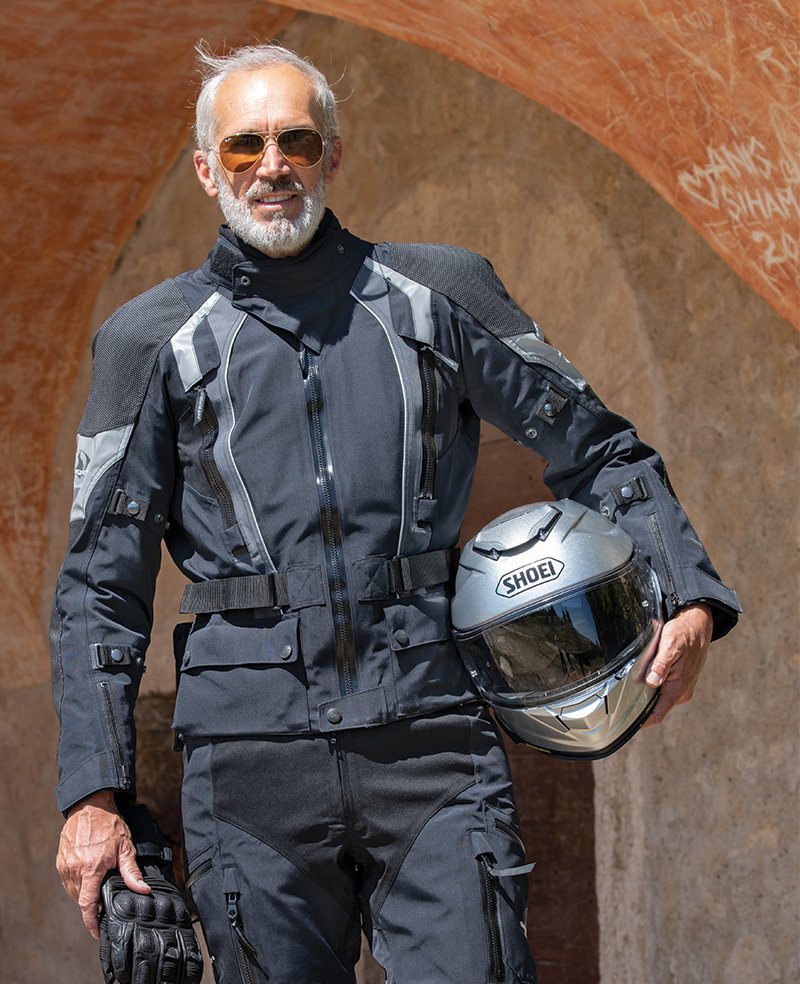
But I’d like to make one final point that might persuade some people that they don’t have to go laminate even if they thought they needed to. If you are prepared to put a waterproof jacket or trouser over the top of your drop-liner garments you can achieve a result that is, in performance terms, even better than you would get if you purchased a laminate garment. Better on two grounds. Firstly, a second waterproof layer over the top of your drop-liner jacket will raise your body’s temperature quite markedly, and that of course is because a waterproof layer is also a wind-proof proof layer, and when you put on a waterproof outer you will be benefitting from not just one, but two, windproof barriers. But, more importantly perhaps, when you put on a waterproof outer the fabric of your main jacket will not even get damp. No rain will be absorbed into the garment so the wind-chill effect will be minimised. And when you get to your destination, your main suit will be totally dry, so there’s no drying time required.
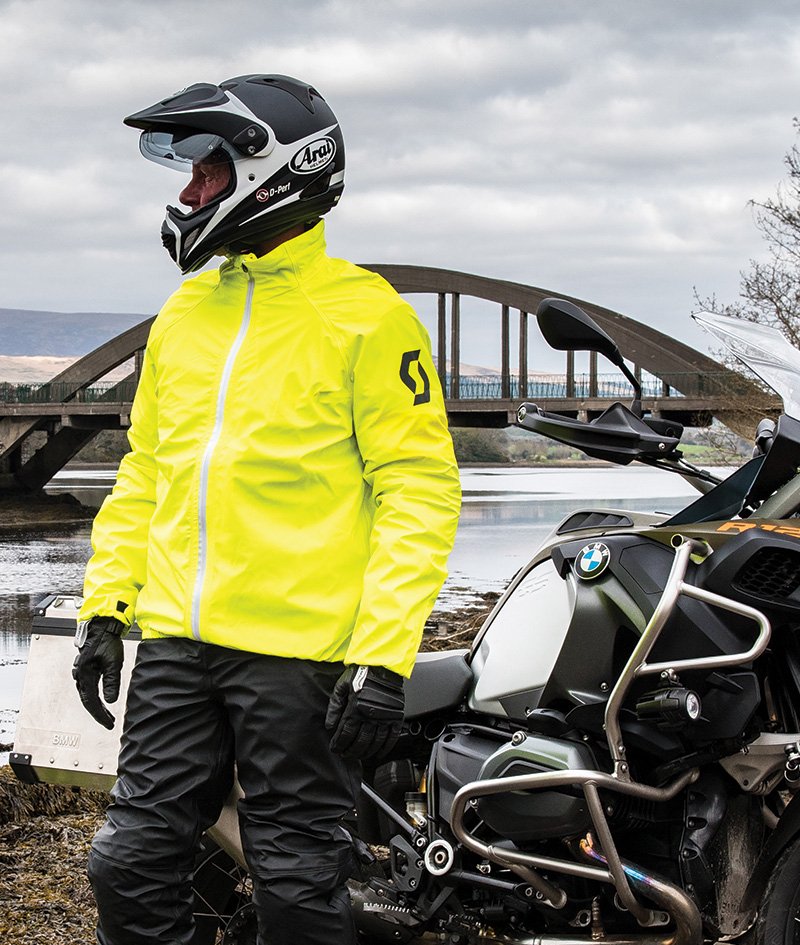
This is sometimes known as the ‘poor’ man’s or the ‘smart’ man’s way to get the benefits of lamination. Too many people dismiss this option, even though we think it’s often a preferable solution. Obviously, it’s an extra hassle. You have to carry a set of waterproofs with you. And you have to choose the right moment to stop and put them on. Of course, if you’re riding in a group, everyone will give you stick, but that’s biking buddies for you! But it is nice to arrive somewhere, and then find all your riding gear totally dry. Bear in mind that the dryer you are the warmer you’ll be. One last word. Don’t cheap out on the waterproofs. Go for something totally waterproof like Scott’s Ergo Pros, or you’ll get wet from the inside.
This has been a slightly bizarre article for us to write. More than any other retailer in the UK, we have been the champions of laminated gear. But, by the same token, we believe that it’s not the best option for everyone, and we derive no joy from selling gear that is inappropriate for a customer’s riding requirements. But don’t ignore our last suggestion about waterproofs. Just occasionally, the simple way, the old-fashioned way, is still the best way!
































































